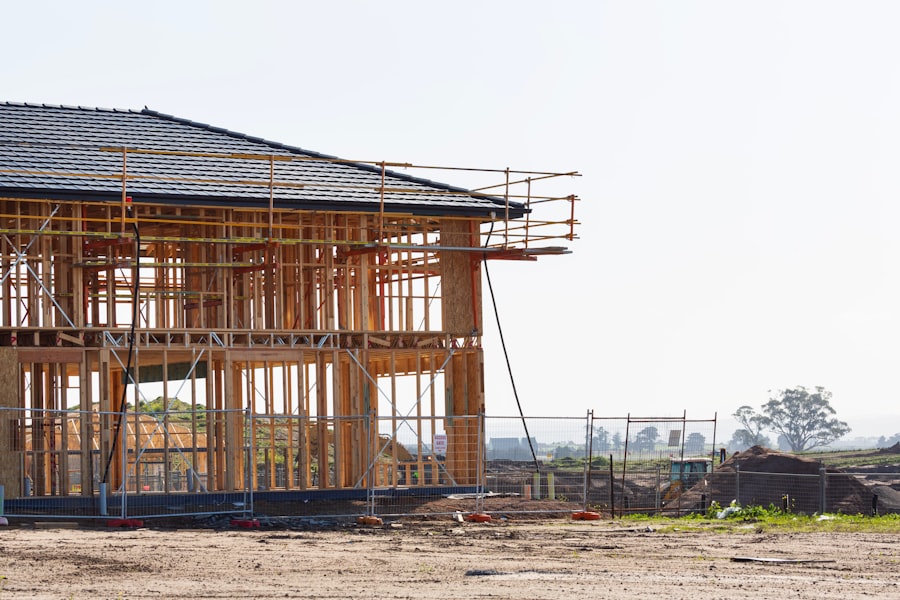
Construction laborers and helpers form the backbone of the construction industry, playing a crucial role in the successful completion of various projects, from residential buildings to large-scale infrastructure developments. These professionals are involved in a wide range of tasks that require physical stamina, attention to detail, and a commitment to safety. The construction sector is diverse, encompassing everything from general labor to specialized trades, and laborers and helpers often find themselves working in dynamic environments that can change from day to day.
The career path for construction laborers and helpers is often characterized by its accessibility; many individuals enter the field with minimal formal education, relying instead on on-the-job training and experience. This accessibility makes it an attractive option for those looking to enter the workforce quickly or for individuals seeking a career change. As the demand for construction projects continues to grow, fueled by urbanization and infrastructure needs, the role of laborers and helpers remains vital.
Their contributions not only support the physical aspects of construction but also enhance the overall efficiency and effectiveness of project execution.
Key Takeaways
- Construction laborers and helpers assist with various tasks on construction sites, such as carrying materials, digging trenches, and operating equipment.
- Job duties and responsibilities include following instructions from supervisors, using hand and power tools, and cleaning and preparing construction sites.
- Education and training requirements typically include a high school diploma or equivalent, with on-the-job training provided by employers.
- Skills and qualities needed for success in this field include physical strength, stamina, and the ability to work in all weather conditions.
- The job outlook for construction laborers and helpers is expected to grow in the coming years, with a median annual wage of around ,000. Advancement opportunities in the field may include becoming a construction manager or pursuing specialized training in a specific trade.
Job Duties and Responsibilities
The job duties of construction laborers and helpers are varied and can differ significantly based on the specific project or trade they are involved in. Generally, construction laborers are responsible for performing a wide range of physical tasks that support the construction process. This can include digging trenches, loading and unloading materials, operating basic machinery, and assisting skilled tradespeople such as electricians, plumbers, and carpenters.
Their work is often physically demanding, requiring them to lift heavy objects, stand for long periods, and work in various weather conditions. In addition to physical tasks, construction laborers must also adhere to safety protocols to minimize risks on the job site. This includes wearing appropriate personal protective equipment (PPE), following safety guidelines, and being aware of their surroundings to prevent accidents.
Helpers, who typically work under the supervision of skilled tradespeople, may assist with more specialized tasks such as mixing concrete, installing drywall, or performing basic repairs. Their responsibilities often involve learning from experienced workers while contributing to the overall progress of the project.
Education and Training Requirements

One of the appealing aspects of a career as a construction laborer or helper is the relatively low barrier to entry in terms of education.
However, having a basic understanding of mathematics and reading comprehension can be beneficial for following blueprints and instructions accurately.
Many employers value practical experience over formal education, which means that individuals can often start working in entry-level positions without extensive prior training. Training for construction laborers typically occurs on the job, where new hires learn essential skills through hands-on experience. Some may also choose to enroll in vocational programs or apprenticeships that provide more structured training in specific trades.
These programs can offer valuable insights into safety practices, tool usage, and construction techniques. Additionally, certifications in areas such as OSHA safety training can enhance a laborer’s employability and demonstrate a commitment to workplace safety.
Skills and Qualities Needed for Success
| Skills and Qualities | Description |
|---|---|
| Communication | The ability to effectively convey information and ideas to others. |
| Problem-solving | The capacity to find solutions to difficult or complex issues. |
| Adaptability | The willingness to adjust to new conditions and environments. |
| Teamwork | The ability to collaborate and work effectively with others towards a common goal. |
| Leadership | The capability to guide and motivate others to achieve success. |
To thrive as a construction laborer or helper, individuals must possess a combination of physical abilities and personal qualities. Physical stamina is paramount; workers must be able to endure long hours of strenuous activity while maintaining focus on their tasks. Manual dexterity is also important, as many jobs require precise movements when handling tools or materials.
Furthermore, being comfortable with heights or confined spaces can be essential depending on the nature of the work. Beyond physical skills, successful construction laborers exhibit strong communication abilities and teamwork skills. Construction sites are often bustling environments where clear communication is vital for coordinating tasks among team members.
The ability to follow instructions accurately and ask questions when uncertain can significantly impact project efficiency. Additionally, a strong work ethic and reliability are crucial traits; employers value workers who show up consistently and demonstrate a willingness to learn and adapt to new challenges.
Job Outlook and Salary Information
The job outlook for construction laborers and helpers is promising, with projections indicating steady growth in employment opportunities over the coming years. According to the U.S. Bureau of Labor Statistics (BLS), employment for construction laborers is expected to grow by approximately 8% from 2020 to 2030, which is faster than the average for all occupations.
This growth is driven by ongoing investments in infrastructure projects, residential construction, and commercial development as populations increase and urban areas expand. In terms of salary, construction laborers earn varying wages depending on factors such as location, experience level, and specific job duties.
However, wages can range significantly; entry-level positions may start at lower hourly rates while experienced workers or those with specialized skills can command higher pay. Additionally, laborers who work in certain industries or regions with high demand may see increased earning potential.
Advancement Opportunities in the Field

Advancement opportunities within the construction industry are abundant for those willing to invest time in developing their skills and gaining experience. Many construction laborers begin their careers in entry-level positions but can progress to more specialized roles over time. For instance, a laborer may choose to pursue training in a specific trade such as plumbing or electrical work, which often leads to higher wages and increased job responsibilities.
Moreover, some laborers may aspire to supervisory or management positions within construction firms. With experience and additional training in project management or safety regulations, they can transition into roles such as foreman or site supervisor. These positions not only offer greater responsibility but also provide opportunities for leadership development and involvement in project planning and execution.
The construction industry values skilled workers who demonstrate initiative and a commitment to continuous learning, making it possible for dedicated individuals to build rewarding careers over time.
If you’re exploring career options such as construction laborers and helpers, it’s also crucial to consider the skills needed to advance in any professional field. A related article that might be of interest is about “Developing Leadership Skills: Mentoring and Coaching.” This piece can provide valuable insights into how you can grow and evolve in your career, whether you’re on a construction site or in an office. Enhancing your leadership abilities can open doors to supervisory roles and beyond in the construction industry. You can read more about this topic by visiting Developing Leadership Skills: Mentoring and Coaching.
FAQs
What are the typical job duties of construction laborers and helpers?
Construction laborers and helpers assist craftworkers, such as electricians and carpenters, with a variety of tasks. They may clean and prepare construction sites, load and unload materials, dig trenches, and operate construction equipment.
What are the educational requirements for construction laborers and helpers?
Most construction laborers and helpers do not need formal education, although some may complete an apprenticeship or on-the-job training program. A high school diploma or equivalent is typically required.
What is the job outlook for construction laborers and helpers in the USA?
According to the U.S. Bureau of Labor Statistics, the employment of construction laborers and helpers is projected to grow 5 percent from 2020 to 2030, about as fast as the average for all occupations.
What is the median pay for construction laborers and helpers in the USA?
According to the U.S. Bureau of Labor Statistics, the median annual wage for construction laborers and helpers was $37,080 in May 2020.
What are the potential career advancement opportunities for construction laborers and helpers?
With experience and additional training, construction laborers and helpers may advance to become construction craftworkers, such as carpenters, electricians, or plumbers. They may also become construction managers with further education and experience.



